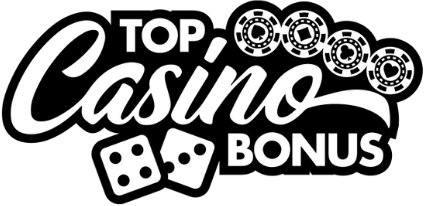Understanding slot paylines, reels, and symbols
Most folks who jump into slots think it’s all about spinning reels and dumb luck. They see flashing lights, hear the jingles, and figure it’s just a fancy coin toss. That kind of thinking is what gets rookies chewed up and spit out. Truth is, if you don’t understand paylines, reels, and symbols, how they dance together, how they talk to the machine, then you’re just tossing money down the pipe. Let’s dig into this craft properly, the old-school way, with a focus on what actually drives outcomes under the hood.
Table of contents
The anatomy of a slot machine: more than meets the eye
Let’s cut to the chase. A slot isn’t just window dressing. It’s an algorithmic engine wrapped inside a seductive shell. At the core, you’ve got three primary components: reels, paylines, and symbols. If you don’t know how each interacts, you’ll never make sense of what’s going on when the reels land and that guy next to you screams across the room.
Understanding reels: the rotating illusion
The reels are where most amateurs let their logic collapse. Visually, you may see three, five, even seven vertical reels spinning. But those reels aren’t mechanical anymore. What you’re seeing is a digital representation powered by a Random Number Generator (RNG). If RNG is a mystery to you, that’s square one, and I suggest brushing up through this in-depth resource on understanding RNG in online casino games. It’s the bedrock of modern slot mechanics.
What matters most isn’t the number of reels but how many symbols each can display and what combinations the engine recognizes as winning ones. Older machines might’ve had 10-12 stops per reel; now, digital reels can house hundreds of virtual stops. That’s how they create massive jackpots on a limited surface area.
Payline mechanics: the heartbeat of the machine
Ah, paylines. This is where it gets spicy. Back in the day, there was just one horizontal payline. You hit three cherries in a row, and boom, you’re drinking on the house. Now, you’ve got 20, 50, even 243 ways to win. Sometimes, they’re fixed; other times, you can choose how many paylines to activate. But here’s the thing, the more paylines you light up, the more you bet per spin. That changes the entire ROI structure.
It’s a common rookie mistake to think more paylines equals more wins. Not so fast, what you’re getting is more chances, not guarantees. And if your bankroll isn’t built for multi-line coverage, you’re just shaving off your funds faster. You’ve got to map your bet to your session goals. That’s where solid bankroll structure meets game knowledge.
Symbols: the old language of luck
This is where you need sharp eyes. Every slot machine has its own cast of characters, symbols ranging from basic to wild, to scatter, to bonus. Basic symbols create low-to-mid payouts. The big dogs, the wilds and scatters, trigger features that can change your entire session.
Wilds substitute for other symbols, usually excluding special ones like scatters. Think of them as the chameleon of the slot world. Scatters don’t need to land on a payline to pay, they just need to show up across certain reels. Three or more often triggers a free spins feature or a bonus round. That’s where the meat of the game lies: inside those bonus mechanics built into the scatter activation.
Modern variations and how to adapt
With online platforms expanding like wildfire, manufacturers have started twisting the traditional rules. From Megaways to Cluster Pays, the old linear paylines have evolved, and not always for the better as far as transparency goes. Some games now boast 117,000+ ways to win. Sounds grand, right? But check the volatility, oftentimes, that payout schema pumps up variance to stomach-churning levels.
Evaluating volatility and payout ratios
Your key stats here are Return to Player (RTP) and volatility. RTP tells you how much, theoretically, the machine pays back over time. Volatility tells you how often it pays and how big. Big payouts? Infrequent wins. Frequent wins? Tiny pot sizes. You want to find a balance based on session length and bankroll.
When evaluating online platforms, stick to operators who disclose both RTP and variance data. Good examples include platforms like BetMGM, which consistently provides player data transparency, or 888casino, where payout metrics are part of the experience design. These aren’t backroom operations, they stake their reputation on both fairness and clarity.
Importance of symbol mapping and cycles
One of the long-lost arts in understanding slots is symbol mapping, figuring out how frequently each symbol appears across all reels, not just one. On modern slots, that comes down to how the symbols are weighted in the code. I once charted a high-volatility slot over 5,000 spins, noting every scatter occurrence. Result? A precise frequency ratio that let me predict bonus activation patterns well within 20 spins. That’s not luck, that’s data discipline.
Selecting games based on reliable RTP logic
I’ve played plenty of machines that felt “hot” just because they were designed with tighter frequencies around bonus triggers. But don’t confuse the illusion of winning with long-term EV. Platforms like Bet365 Casino and Bally Casino do a commendable job of featuring games with disclosed RTPs, so players aren’t left poking in the dark.
And always seek out info on the hit frequency. Some top-ranking slots hit smaller wins frequently, keeping bankrolls alive for that rare bonus explosion. You’ve got to learn how to ride volatility like a practiced surfer, not fight every wave, but pick the right one to coast to the shore.
The wisdom behind the spins
It’s easy to get swayed by shiny themes and cinematic visuals. But slots are mathematical puzzles. RNG decides outcomes, but your role is to read between the lines, to catch patterns, manage variance, and capitalize during heat cycles. The best slots aren’t just entertaining, they reward those who approach them with tact, not wishful thinking.
In this world, it’s simple: Know the mechanics, understand the math, and don’t get rushed. Respect the rhythm of the reels. Many young bucks dive in chasing jackpots without knowing why symbols land the way they do. They’d do well to step back and learn the fundamentals instead of clawing at the screen.
At the end of the day, slots are the oldest electronic conundrum in the house, simple on the surface, layered like bedrock underneath. Learn the symbolism. Count the beats between features. And for the love of common sense, never trust a machine just because it’s popular. Trust the data, measure the cycles, and spin with insight. That’s how seasoned hands make it out ahead.





0 Comments